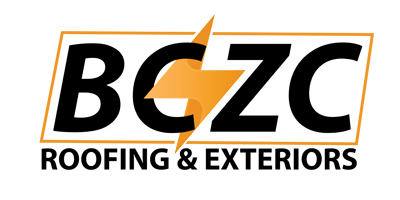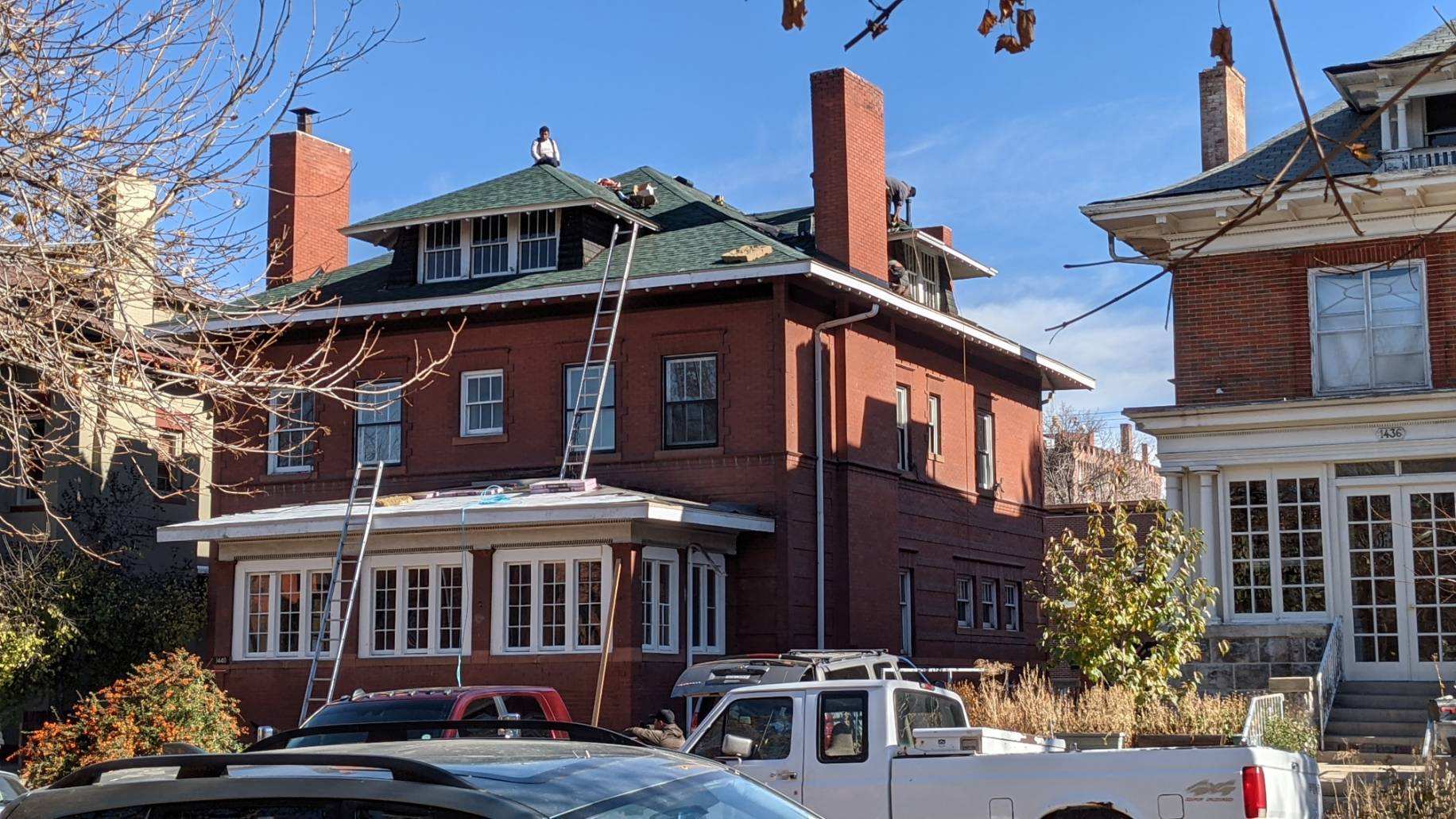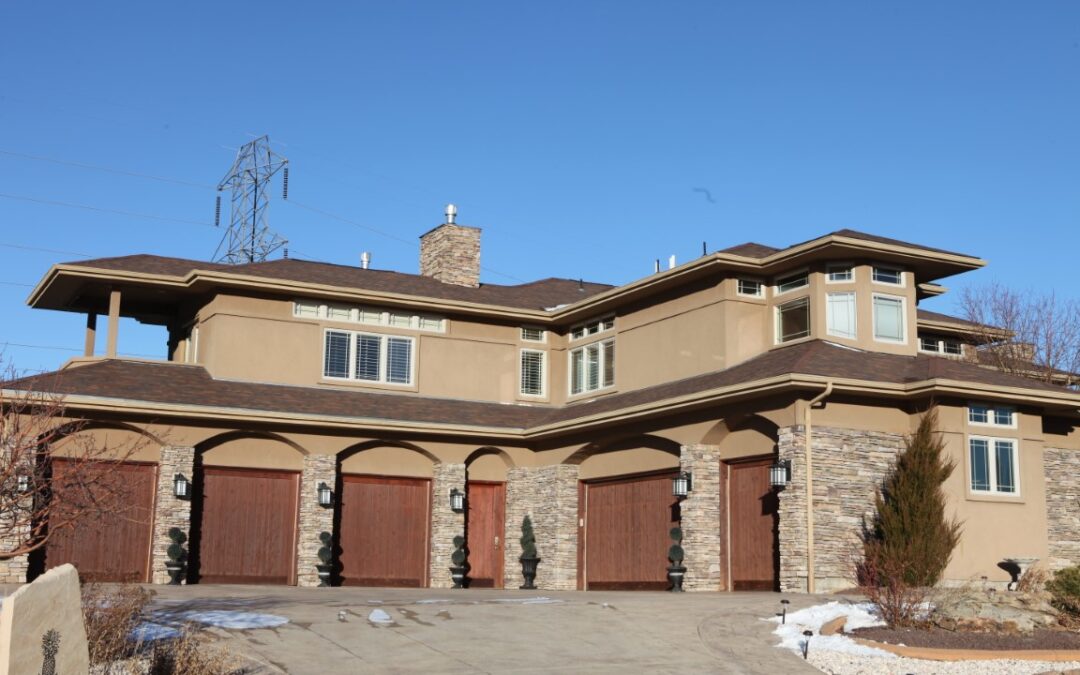Colorado homeowners face an unrivaled combination of high‑altitude UV, extreme temperatures, heavy snow, high winds, and wildfire risk. Selecting the best roofing materials for your Colorado home means balancing durability, energy efficiency, fire resistance, curb appeal, and budget. This guide compares the most popular and energy‑efficient roofing materials—from traditional asphalt shingle roofing to modern synthetic roofing materials—so you can make an informed decision.
Key Criteria for Choosing Roofing Materials in Colorado
- Ability to withstand extreme weather conditions – Heavy snow loads, hail, and chinook winds demand highly resistant roofing.
- Fire resistance – Class A fire‑rated roofing materials protect homes in wildfire‑prone areas.
- Energy efficiency & reflective roofing materials – High‑albedo surfaces lower cooling costs in summer.
- Maintenance requirements & life expectancy – Long‑lasting, low‑maintenance roofs reduce total cost of ownership.
- Cost & insurance savings – Upfront price, long‑term value, and Class 4 impact ratings influence premiums.
Top Roofing Options for Colorado Homes
Architectural Asphalt Shingles
- Why they’re popular: Asphalt shingles remain the most common roofing material due to affordability and versatility.
- Pros: Low upfront cost; Class 4 impact‑resistant versions withstand hail; multiple colors and styles; moderate energy efficiency with cool‑roof coatings.
- Cons: Shorter life expectancy (20–30 years); higher maintenance than metal or tile; susceptible to high winds if not installed correctly.
- Best for: Budget‑conscious Colorado homeowners who need reliable performance in severe weather.
Standing Seam & Steel Metal Roofs
- Why they top the list: Metal roofs are incredibly durable and highly resistant to storm debris, high winds, and heavy snow.
- Pros: 40–70+ year lifespan; Class A fire resistance; reflective finishes for energy efficiency; minimal maintenance; light weight compared to concrete tiles.
- Cons: Higher upfront cost than asphalt shingles; may dent under very large hail without impact‑resistant panels.
- Best for: Homeowners seeking a long‑lasting roof with low maintenance and excellent energy efficiency.
Concrete & Clay Tile Roofing
- Why they excel: Tile roofing resists fire, high winds, and temperature extremes while adding Mediterranean or Southwest curb appeal.
- Pros: 50–100+ year life expectancy; Class A fire rating; excellent insulation; low maintenance.
- Cons: High material cost; added structural weight; brittle under severe hail unless impact‑rated tiles are selected.
- Best for: Homes with adequate structural support that value longevity and classic aesthetics.
Synthetic Roofing Materials (Composite Slate & Shake)
- Why they’re trending: Synthetic slate roofs and synthetic shake roofs mimic natural slate while shedding weight and maintenance.
- Pros: Impact‑resistant Class 4 rating; light weight; 40–50+ year lifespan; recyclable content; low maintenance.
- Cons: Mid‑to‑high upfront cost; fewer long‑term performance studies compared to metal or tile.
- Best for: Homeowners seeking luxury appearance, reduced maintenance, and high storm resistance.
Rubber & TPO Roofing for Flat Roofs
- Why they matter: Commercial building owners and homes with low‑slope roofs need membranes that handle ponding water.
- Pros: Seam‑welded for watertight coverage; UV‑resistant white TPO membranes reduce cooling costs; quick installation.
- Cons: Shorter 20–30 year lifespan; aesthetics less appealing for steep‑slope residential roofs.
- Best for: Flat roofs and commercial buildings requiring energy‑efficient, low‑maintenance waterproofing.
Comparison Table of Roofing Materials Suitable for Colorado
| Roofing System | Class A Fire? | Class 4 Impact? | Lifespan (yrs) | Maintenance Level | Relative Cost* |
|---|---|---|---|---|---|
| Architectural Asphalt | With mod bit cap? | Available | 20–30 | Moderate | $ |
| Impact‑Resistant Asphalt | Yes | Yes | 25–35 | Moderate | $+ |
| Standing Seam Metal | Yes | Yes (steel) | 40–70+ | Low | $$–$$$ |
| Stone‑Coated Steel | Yes | Yes | 50+ | Low | $$–$$$ |
| Concrete Tile | Yes | Yes (ratings vary) | 50–75 | Low | $$–$$$ |
| Clay Tile | Yes | Yes (select models) | 75–100+ | Low | $$$ |
| Synthetic Slate/Shakes | Yes | Yes | 40–50 | Low | $$–$$$ |
| EPDM / TPO (Flat Roofs) | Yes | N/A | 20–30 | Low | $$ |
*Relative cost symbols: $ = Lowest, $$$ = Highest. Costs vary based on roof size, pitch, and local labor rates.
How Colorado’s Weather Influences Roofing Choices
- Hail & High Winds: Opt for Class 4 impact‑rated products like stone‑coated steel or impact‑resistant asphalt shingles.
- Wildfire Zones: Select Class A fire‑resistant roofing material—metal roofs, tile, or treated cedar shingles.
- Heavy Snow Loads: Standing seam metal and concrete tiles shed snow quickly; ensure proper snow‑guard installation on steep roofs.
- Intense Sun & UV: Reflective metal coatings and cool‑roof asphalt shingles decrease solar gain and extend shingle life.
Energy‑Efficient Roofing Materials
Reflective roofing materials—such as white standing seam panels, light‑colored concrete tiles, and ENERGY STAR‑rated asphalt shingles—lower attic temperatures by up to 30 °F, reducing summer cooling costs for Colorado homeowners.
Tips for Selecting the Right Roofing Material
- Assess roof pitch & structure – Heavy materials like concrete tiles require strong trusses.
- Review local building codes – Wildfire or HOA rules may dictate Class A fire resistance or color guidelines.
- Balance upfront cost with lifespan – A metal or tile roof can cost more initially but save thousands in future roof replacement and maintenance.
- Consult insurance providers – Class 4 impact‑resistant roofs often earn premium discounts.
- Hire a certified roofing contractor – Expert installation ensures manufacturer warranties and optimal performance.
Frequently Asked Questions (FAQ)
What’s the most popular roofing material for Colorado roofs? Architectural asphalt shingles remain most popular due to affordability, but metal roofs are quickly gaining market share for durability.
Are metal roofs noisy during storms? Installed over solid decking with underlayment, metal roofs are no louder than traditional shingles.
Do tile roofs require special structural support? Yes. Concrete and clay tiles weigh more than other materials; an engineer may confirm load capacity.
Which roofing material requires minimal maintenance? Metal roofs, synthetic slate, and concrete tiles rank among the lowest maintenance options.
Can I mix roofing materials? Yes. Many Colorado homes feature metal accents over porches with asphalt shingles elsewhere, combining style and performance.
Ready to Choose the Best Roof for Your Colorado Home?
BCZC Roofing & Exteriors helps Colorado homeowners navigate roofing material choices that stand up to extreme weather while boosting curb appeal and energy efficiency. Our roofing experts provide free estimates, product comparisons, and Class 4 upgrade options.
Book a free inspection with BCZC Roofing & Exteriors today to find the right roofing material for your home. All roof replacements include a complimentary upgrade to impact‑resistant shingles on applicable areas—delivering better protection and potential insurance savings.



